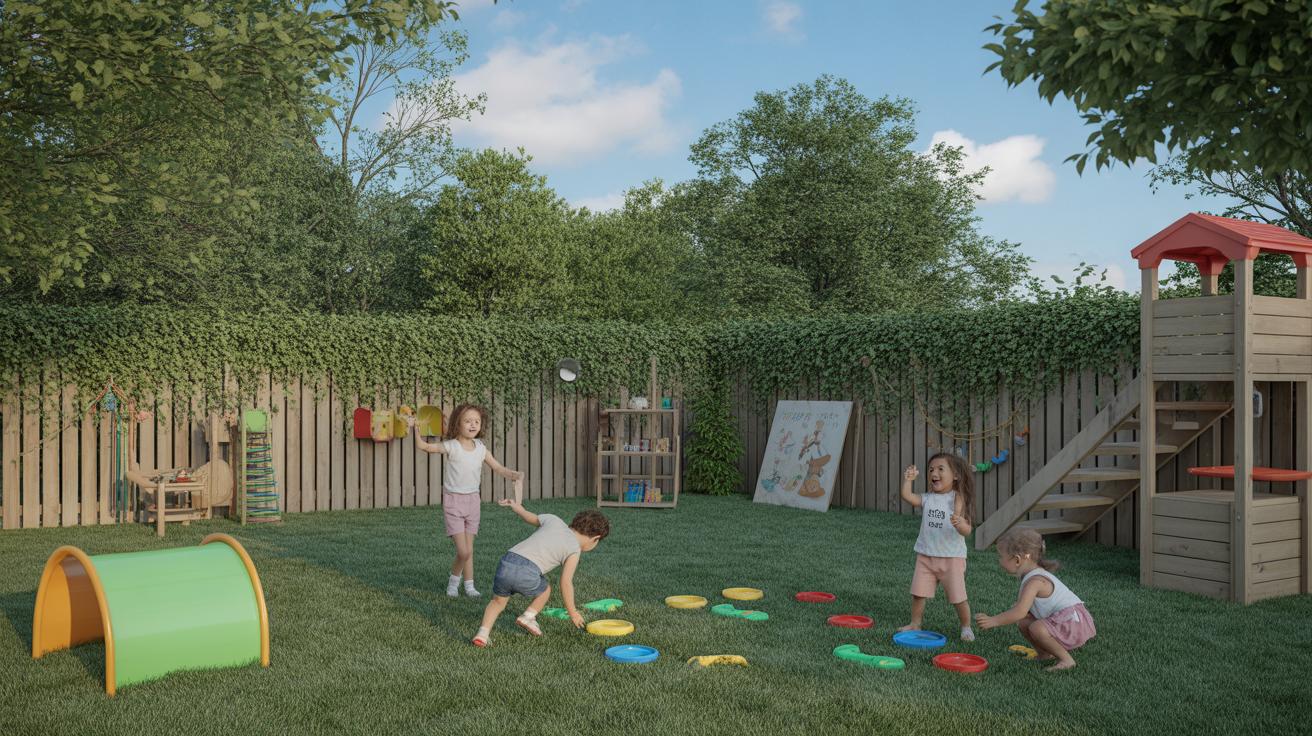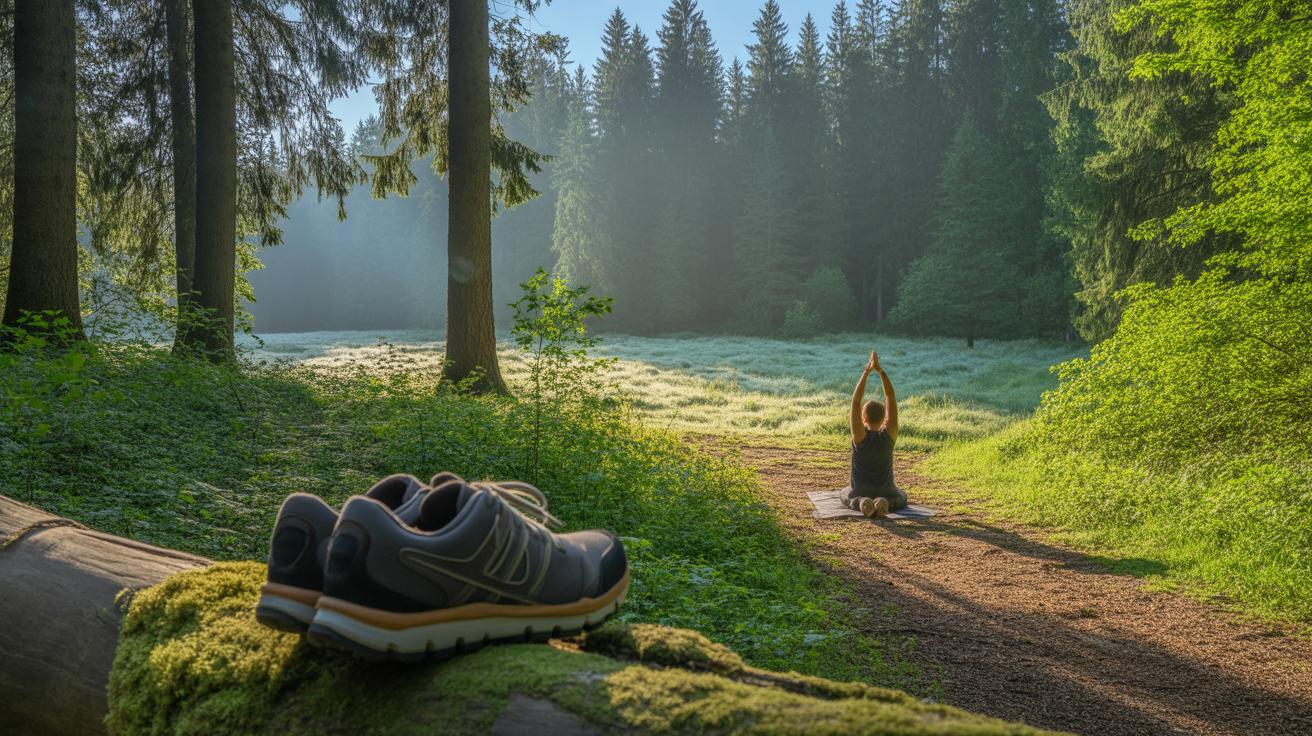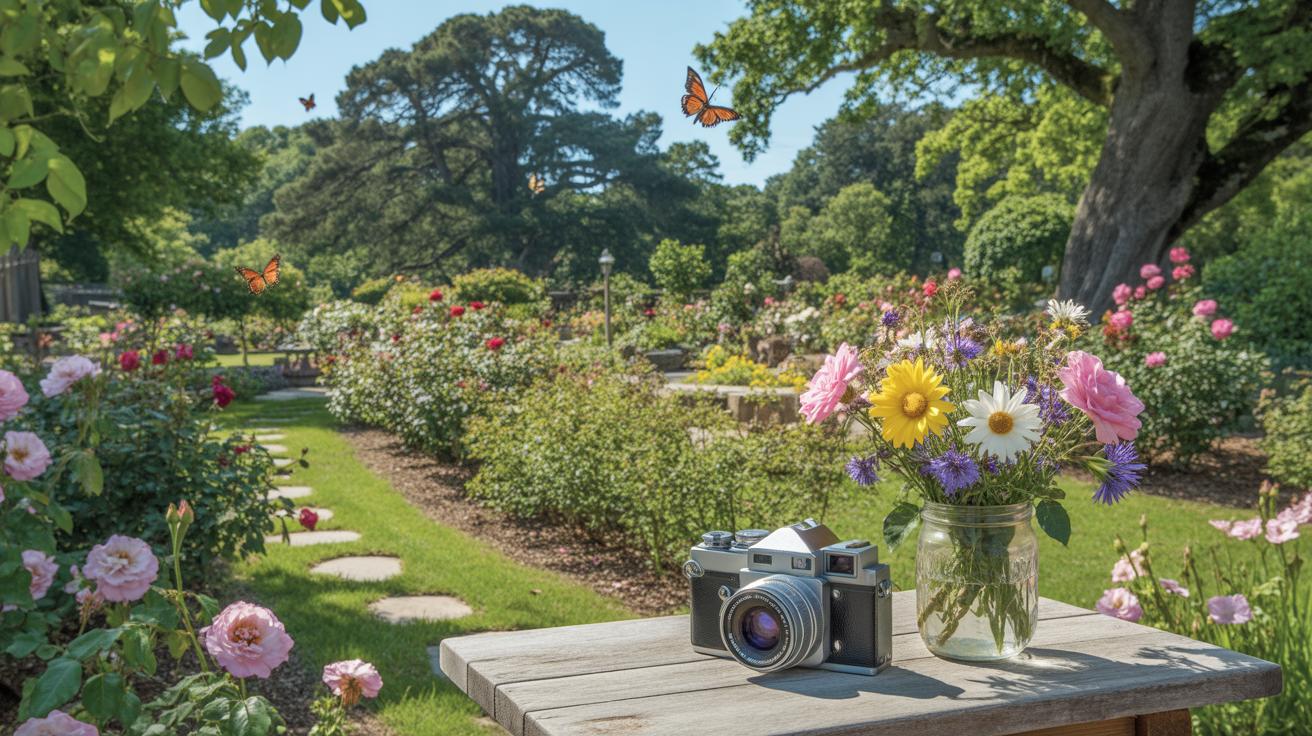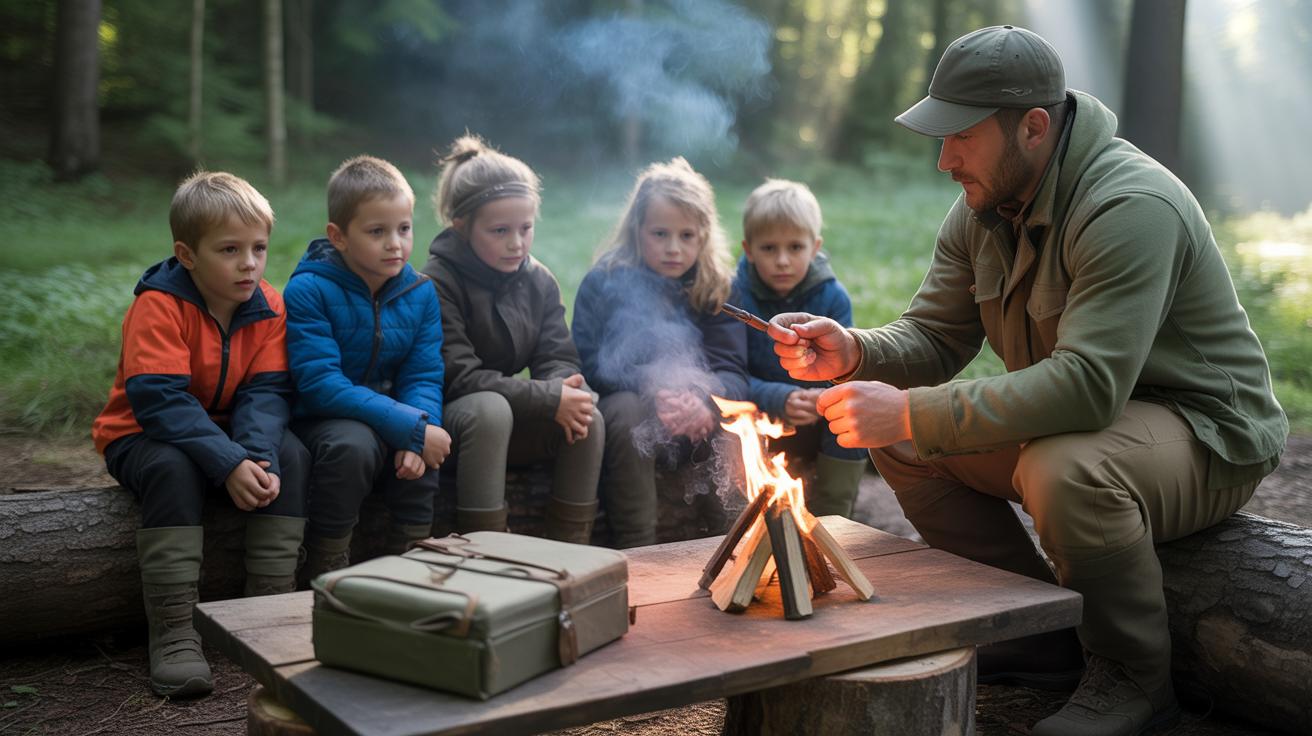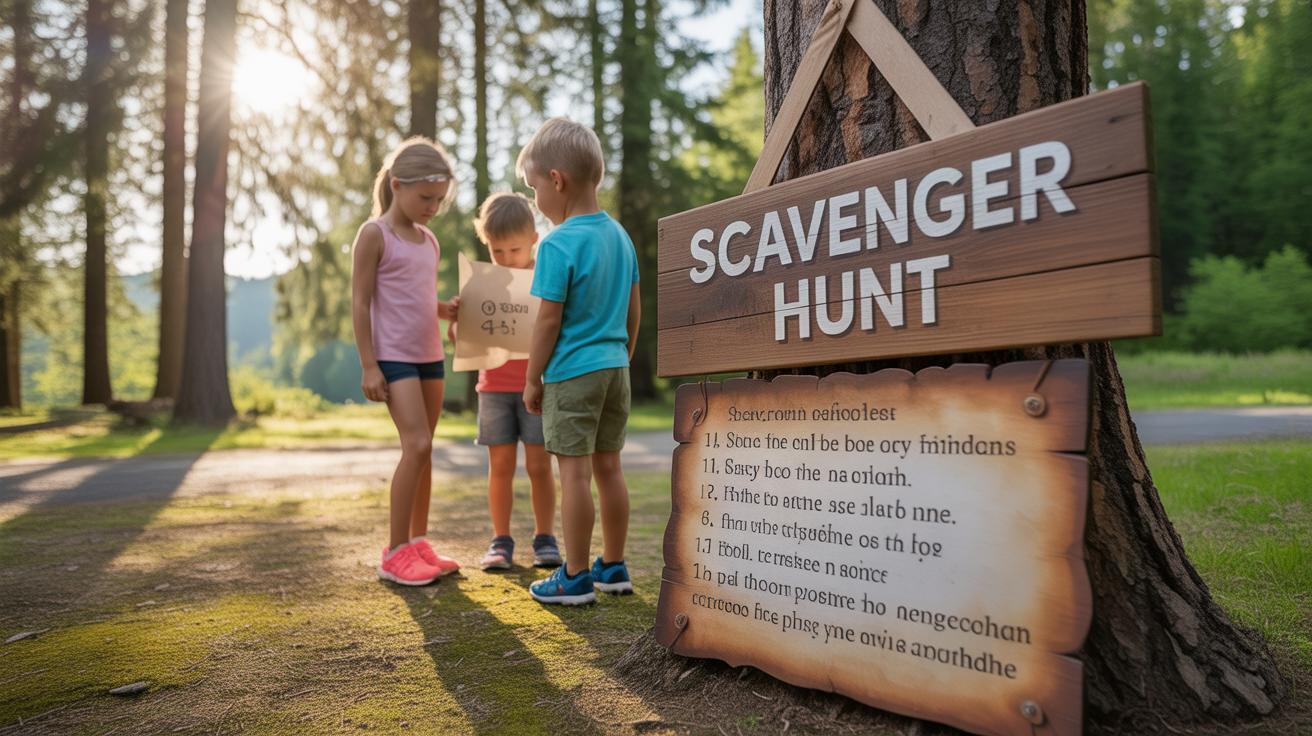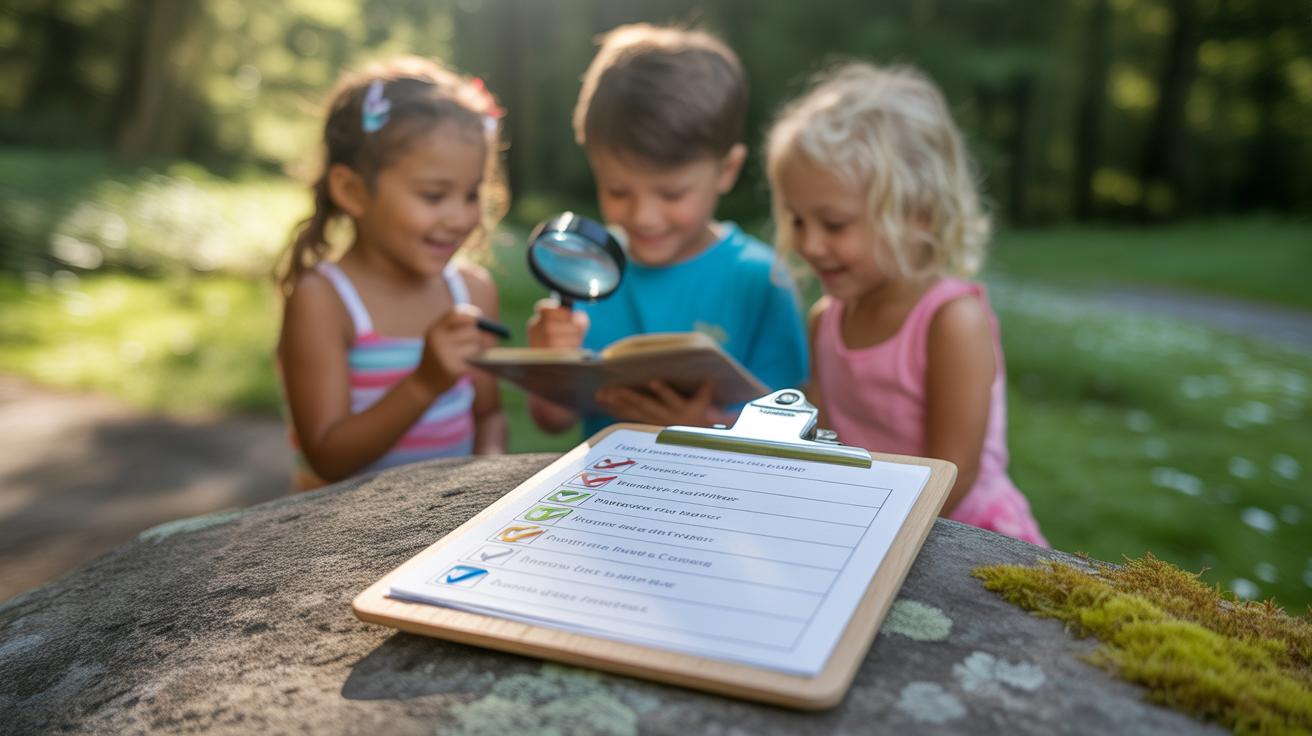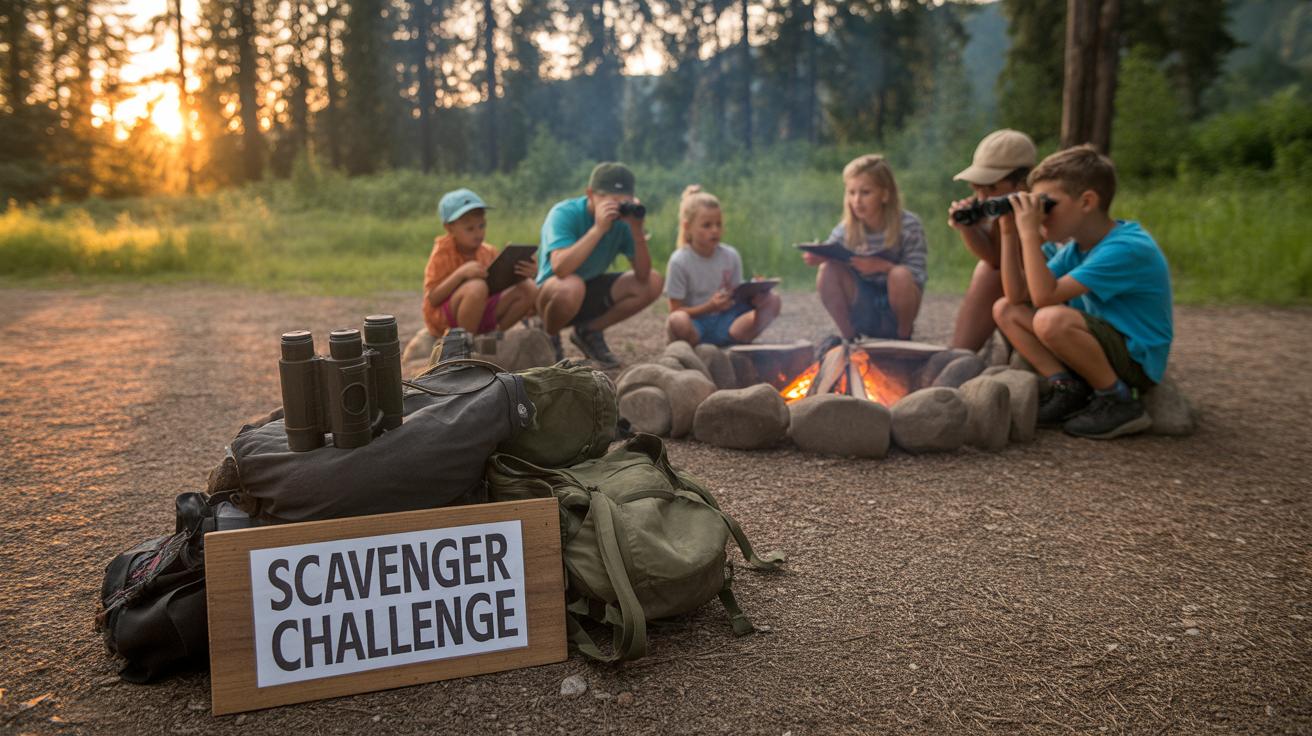Introduction
Summer is the perfect time for kids to enjoy outdoor activities that are fun and engaging. A creative backyard scavenger hunt can provide hours of entertainment while encouraging exploration and learning. When you set up a scavenger hunt in your backyard, your kids get to discover nature, improve problem-solving skills, and enjoy healthy physical activity.
This article explores how to plan an exciting backyard scavenger hunt and other summer activities for kids. You will find practical ideas and tips to make your child’s summer break memorable and meaningful. Let’s dive into fun ways to keep your kids active, curious, and happy all summer long.
Why Choose a Backyard Scavenger Hunt
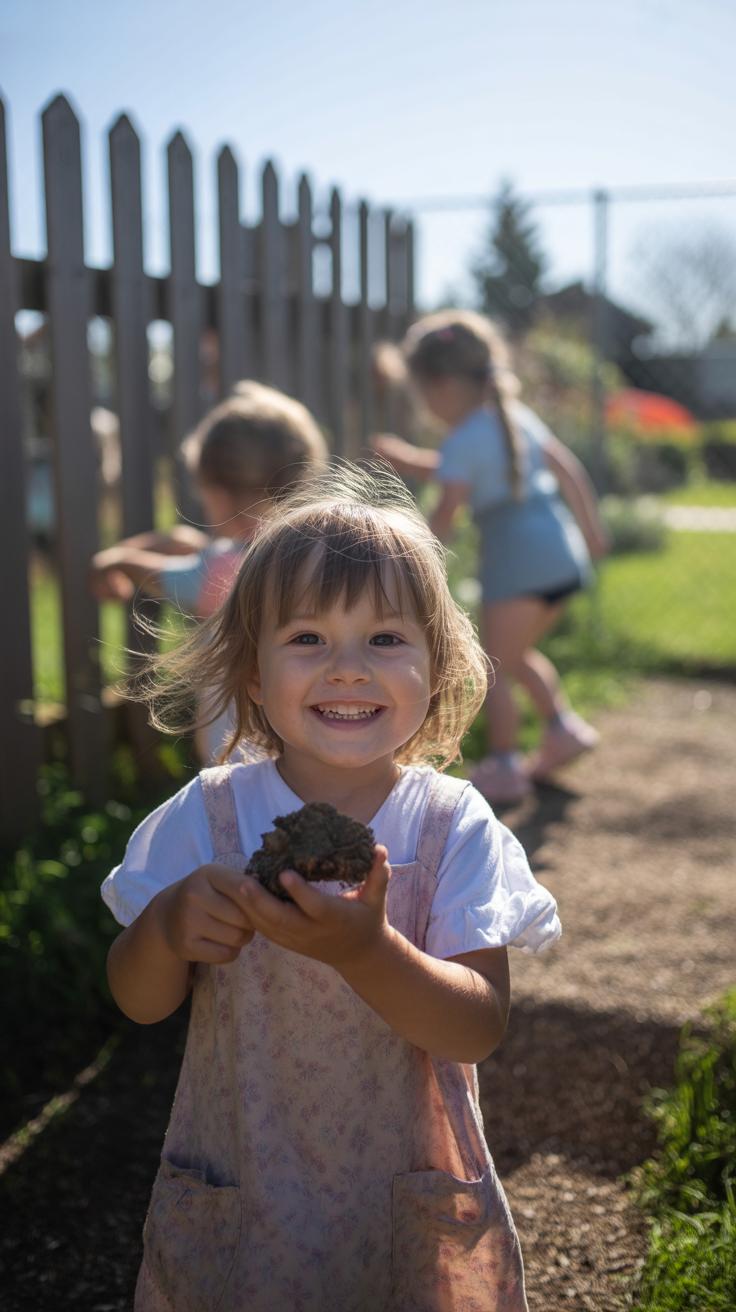
A backyard scavenger hunt offers a unique mix of physical and mental benefits, making it a solid choice for summer fun. Kids get to explore their familiar surroundings but in new ways, which often sparks creativity and fresh ideas. The safety of a known environment means parents can relax a bit more, while children still feel the thrill of discovery.
What’s interesting is how such hunts gently push kids to notice details they’d usually miss—a leaf’s texture or a bug’s movement. That curiosity naturally leads to questions like “Why does this flower smell different?” or “What kind of bug is that?” These questions aren’t always answered on the spot, but they start a conversation that can turn into a mini-learning adventure.
Physically, the activity isn’t demanding in a rigid way, but moving around to find objects really does get kids’ bodies working—whether they’re bending, reaching, or dashing from one place to another. This kind of playful exercise helps with coordination, balance, and burning off energy that might otherwise lead to restlessness indoors.
In short, backyard scavenger hunts strike a balance between mental stimulation and physical movement, all within a setting that’s easy to manage and keeps kids safe. It’s a quiet way to boost their natural urge to explore and learn without the need for screens or structured classes.
Encouraging Curiosity and Learning
Scavenger hunts naturally invite kids to look closer and think deeper about the world around them. When children search for items in the backyard, they don’t just spot things; they start to ask questions about what they’re seeing. For example, a simple hunt might have them identify different kinds of leaves or notice the colors and patterns on insects. This kind of observation encourages them to slow down and take note of details that often go overlooked.
Sometimes, kids will ask why certain plants grow where they do or how some bugs protect themselves. Helping them find answers together turns the backyard into a living classroom. It’s less about memorizing facts and more about nurturing natural curiosity.
Even the act of following clues or searching systematically teaches them problem-solving skills and persistence. So, as the hunt unfolds, children learn through active engagement, not just passive observation. And that, I think, makes all the difference in how these summer days feel to them.
Promoting Physical Activity
One of the strengths of a backyard scavenger hunt lies in the way it encourages kids to move—but in a way that doesn’t feel forced or like exercise. They might be reaching under leaves, climbing over small garden borders, or pacing around bushes, all without realizing they are strengthening muscles and improving coordination.
This type of activity also helps kids use energy constructively. Rather than being restless inside, they channel their energy into something purposeful and fun. The variety of movements—from crawling to running—engages different parts of the body, which can support balance and gross motor skills.
And don’t underestimate the value of frequent short bursts of movement. These can keep children sharp and focused for the rest of the day. It’s a simple way to keep kids physically active without declaring it as exercise, which many of them might actually enjoy more.
How to Prepare Your Backyard for a Scavenger Hunt
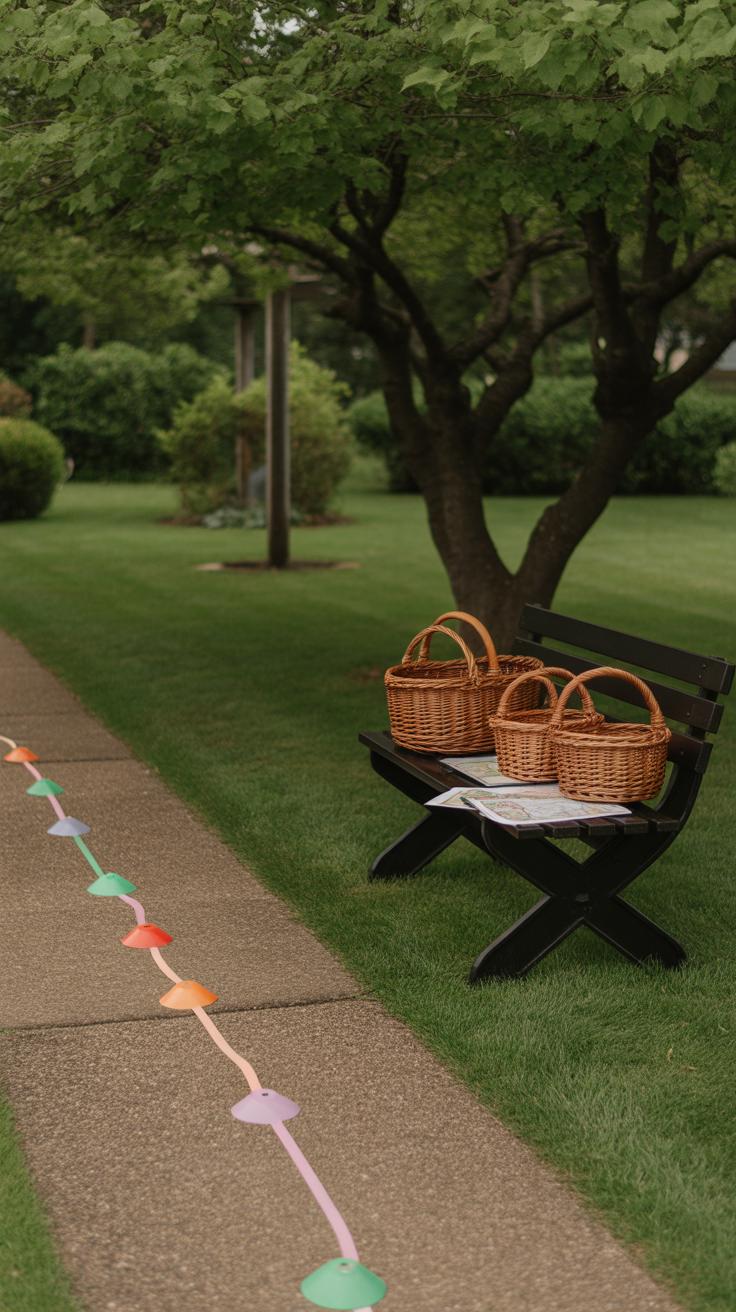
Start by walking around your backyard to pick spots that are easy to reach but not too obvious. Think about safety first—avoid places near sharp tools, fragile plants, or tricky terrain. Maybe tuck items behind flower pots, under garden benches, or near tree roots. Kids tend to climb or scramble unexpectedly, so low and stable hiding places work best.
Next, gather items that match your kids’ ages. Younger children need simpler things like colorful leaves or plastic toys, while older kids might enjoy searching for small natural treasures or objects that require a bit more thinking. Don’t make it too easy, but don’t frustrate them either—it’s a fine balance that you might have to adjust on the fly.
Before the hunt, clear any obvious hazards like garden tools or slippery spots. It’s a good idea to give kids a quick backyard tour pointing out what’s off-limits without spoiling the fun. That little preparation goes a long way in keeping things smooth and stress-free.
Picking the Right Items for Your Hunt
Your backyard probably has more treasures than you realize. Here are some things you might consider:
- A smooth stone or pebble
- Brightly colored flower petals
- Feathers found on the ground
- Pine cones or acorns
- Small plastic animals or figures
- Leaves of different shapes
- A garden gnome or ornament
- Twigs shaped like the letter Y or X
- Watering can or garden gloves (hidden in plain sight)
Choosing a mix of natural items and safe toys keeps the hunt more interesting. You might swap out certain items depending on season or your backyard’s setup. Have you noticed some unexpected finds spring up? Kids might surprise you by seeing ordinary things differently.
Creating Clear and Simple Clues
When writing clues, keep the language short and straightforward. Use familiar words and avoid twisting sentences that could confuse younger kids. For instance, instead of “Seek the verdant fortress guarding the watery chalice,” you could say, “Look near the green bush beside the watering can.”
Clues that rhyme can work well, but only if they’re truly simple. Otherwise, stick to direct instructions or fun hints that prompt kids to think without needing a dictionary. Sometimes a question can spark curiosity like, “What’s hiding under the big tree’s shade?”
Remember, a clue should invite the child to explore, not frustrate them. If some kids struggle, pause and give a small hint. You want the scavenger hunt to feel like an adventure, not a puzzle marathon that drains the fun.
Organizing Teams and Setting Rules
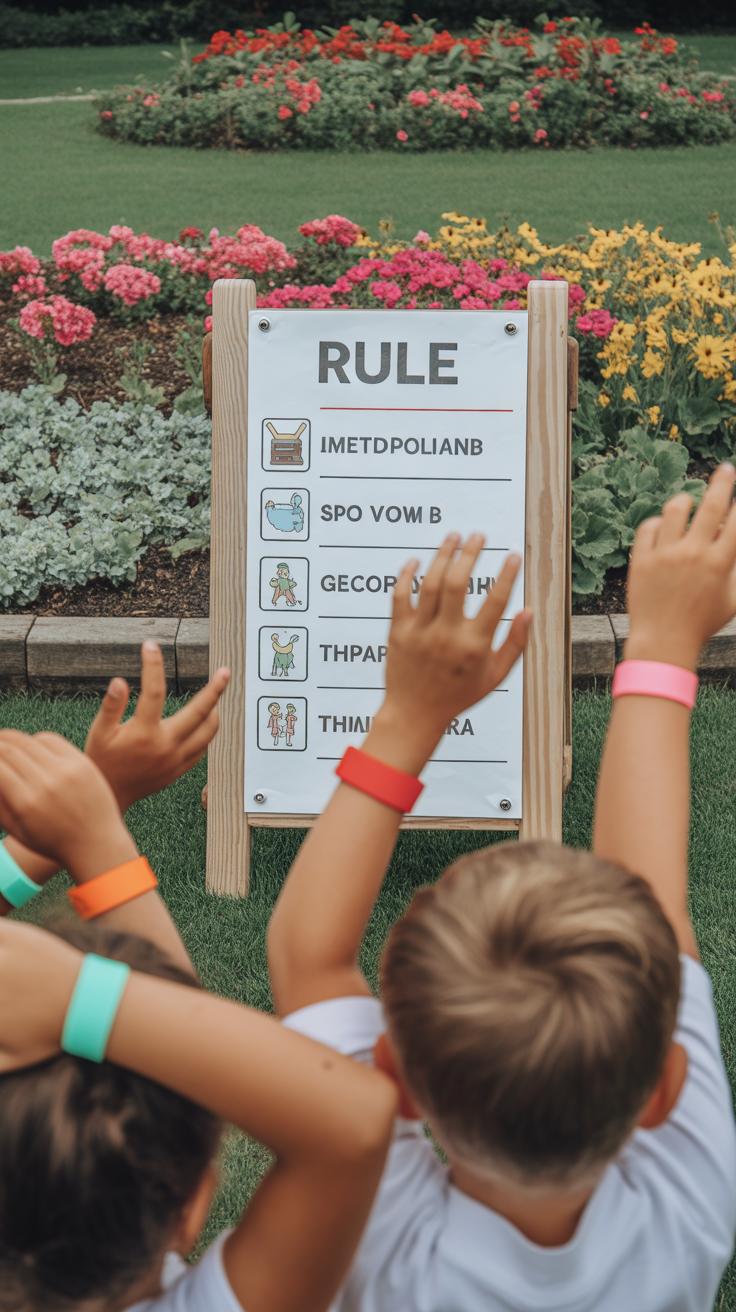
Deciding whether kids play individually or in teams can change everything about the scavenger hunt. Sometimes, letting kids go solo works best—especially if you want to focus on quick thinking or if the group is small. But teams bring a different energy. Splitting kids into small groups helps balance the game, especially if ages or abilities vary a lot.
When dividing teams, try to mix personalities and skills so everyone feels included. Maybe pair a shy kid with a more outgoing one, or balance older kids with younger ones. It’s not perfect science, but helps the game flow smoother.
Keeps rules simple and clear. For example:
- No running inside sensitive areas—nobody wants broken plants or accidents.
- Each team sticks together; no solo searches mid-game.
- When something is found, call out before grabbing it.
- Keep the hunt peaceful—no hiding spots that involve tricky climbs or unsafe elements.
Sometimes, explaining rules once feels enough. Other times, kids seem to forget halfway, so reminding everyone halfway through helps maintain fairness. Does everyone understand why these rules matter? Often the why changes how seriously they play.
Playing in teams offers more than just shared fun. Kids learn to communicate, listen, and make decisions together. When one child spots an item, they might shout it out, encouraging others to think where the next clue could hide. That sharing builds not just teamwork but patience too—waiting your turn or hearing different ideas.
On the safety front, keep eyes on the group and the boundaries you set. It’s tempting for kids to explore “just a little beyond” the yard, but clear limits prevent worries and lost runners. Also, agreeing on how to solve disputes before the hunt—like “rock-paper-scissors” or a parent’s call—avoids long arguments that sour the mood.
Remember, fun and fairness go hand in hand. A little preparation and flexibility go a long way to keeping every kid smiling at the end, even if they didn’t find the last hidden item.
Adding Educational Challenges
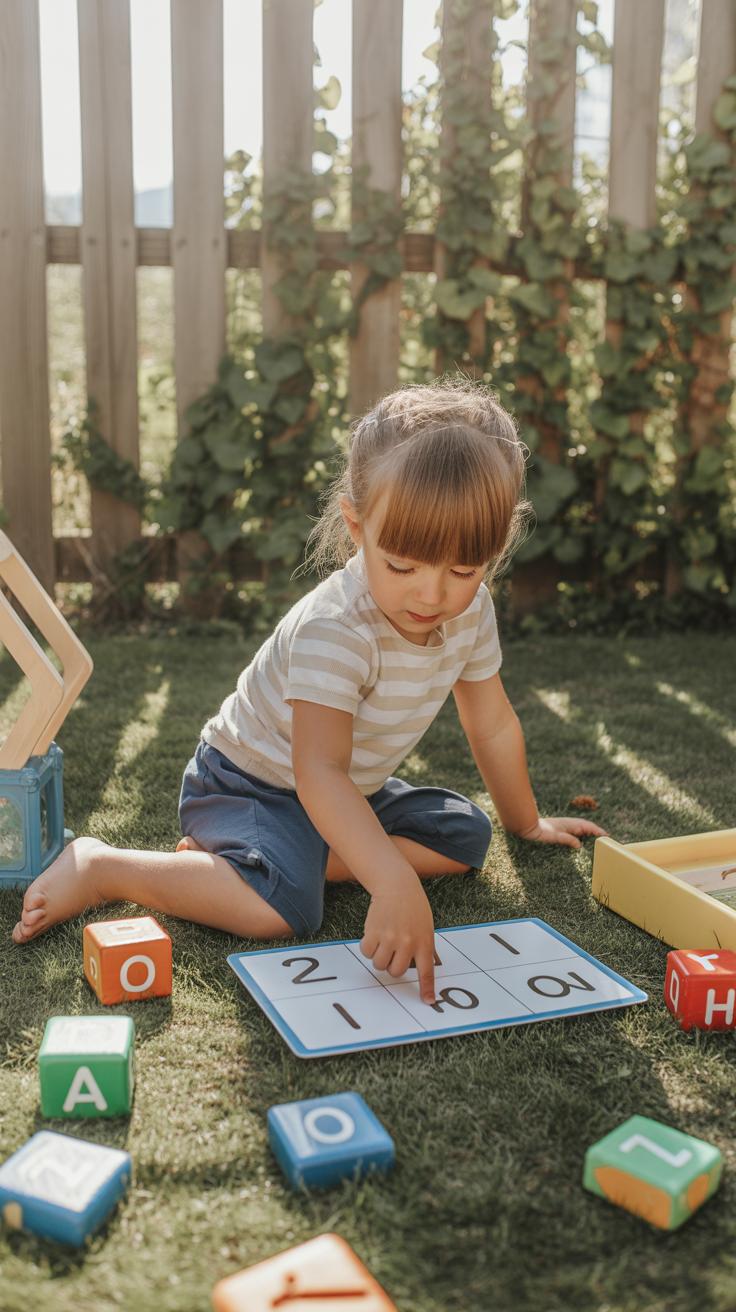
Mixing learning into a backyard scavenger hunt can make the game feel more meaningful without turning it into a chore. Try slipping in simple questions about the natural objects kids find. For example, when spotting a leaf, ask what tree it might come from, or what insects might live nearby. It doesn’t have to be too detailed—just enough to spark curiosity.
Here are a few ideas to get started:
- Ask kids to name the colors they see on a flower—how many different ones can they spot?
- Have them guess how old a tree might be based on its trunk size (even a rough guess counts).
- Encourage identifying animal tracks or sounds heard nearby.
You could also include creative mini-tasks like drawing the item they found or trying to mimic the sound of a bird close by. It’s an easy way to mix observation with imagination. Once, I watched a group struggle to imitate frog croaks—it was both hilarious and strangely effective at keeping them invested.
These challenges don’t need to slow the hunt down too much. In fact, they can break the pace in a good way, giving kids a moment to think, laugh, or get a bit messy with their drawings. It turns the backyard into a small classroom, but without the usual pressure. Sometimes, it’s the questions they ask themselves that matter the most.
Using Technology to Enhance the Hunt
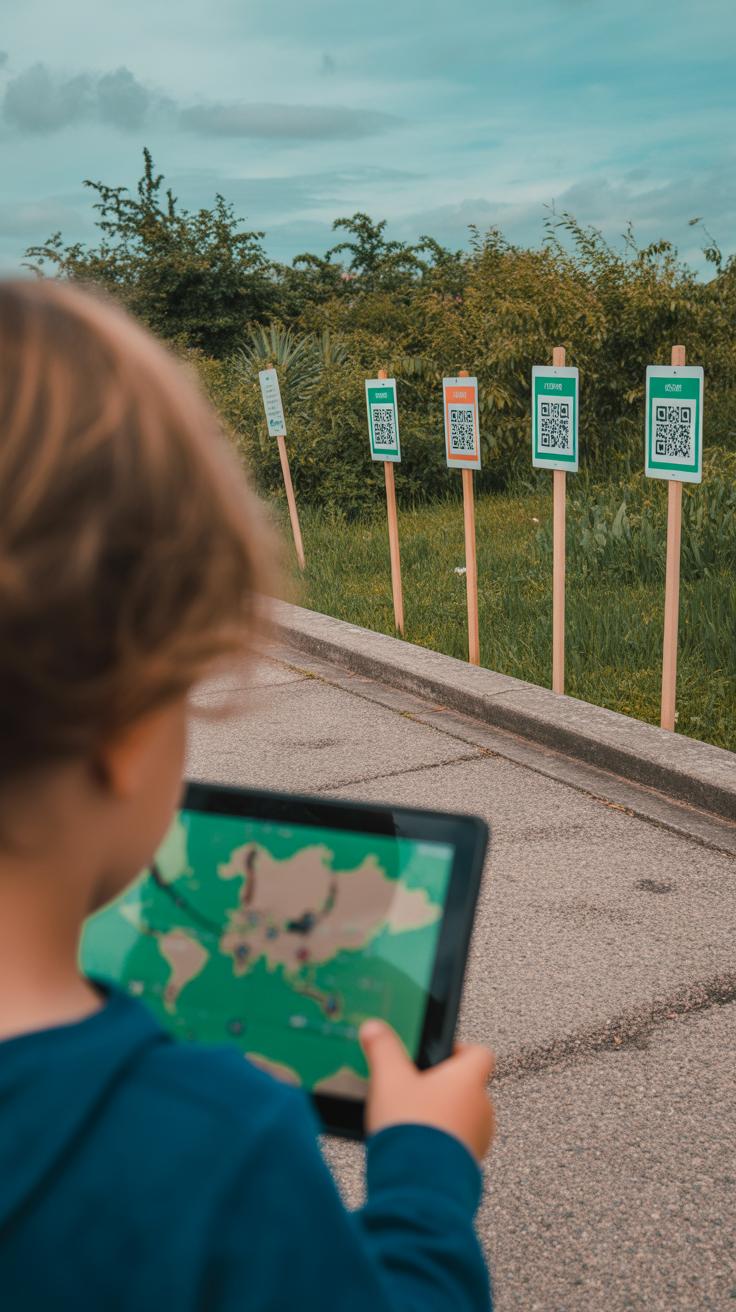
Technology can add a surprising layer of fun to backyard scavenger hunts. Instead of just finding things, kids can use cameras or smartphones to snap pictures of their discoveries. This shift turns the hunt into a sort of digital adventure, making it more interactive. Instead of collecting or disturbing nature, children simply capture images. It’s a respectful way to engage with the environment, and it encourages careful observation—kids start noticing details they might miss otherwise.
Taking Photos for Evidence
Asking kids to take photos instead of gathering physical items offers a way to keep nature intact. This simple switch helps teach respect for plants and animals, which might be fragile or important to the local ecosystem. Also, it can make the game less messy and easier to manage at home. Plus, looking back at the photos creates a cool memory book of the hunt. I’ve found that children often get really creative with framing shots, and sometimes they even come up with stories about what they spotted.
Apps and Tools for Scavenger Hunts
There are a few apps that simplify planning and organizing scavenger hunts. Some let you create custom lists or drop digital clues around your yard, while others guide kids through photo challenges. You don’t need anything too complicated—apps like GooseChase or Scavify offer easy interfaces for beginners. They track points and progress, which can boost motivation, especially if you have multiple kids competing. Still, some might find it a little much and prefer a phone just for pictures. It really depends on how tech-involved you want the activity to be.
Other Backyard Summer Activities for Kids
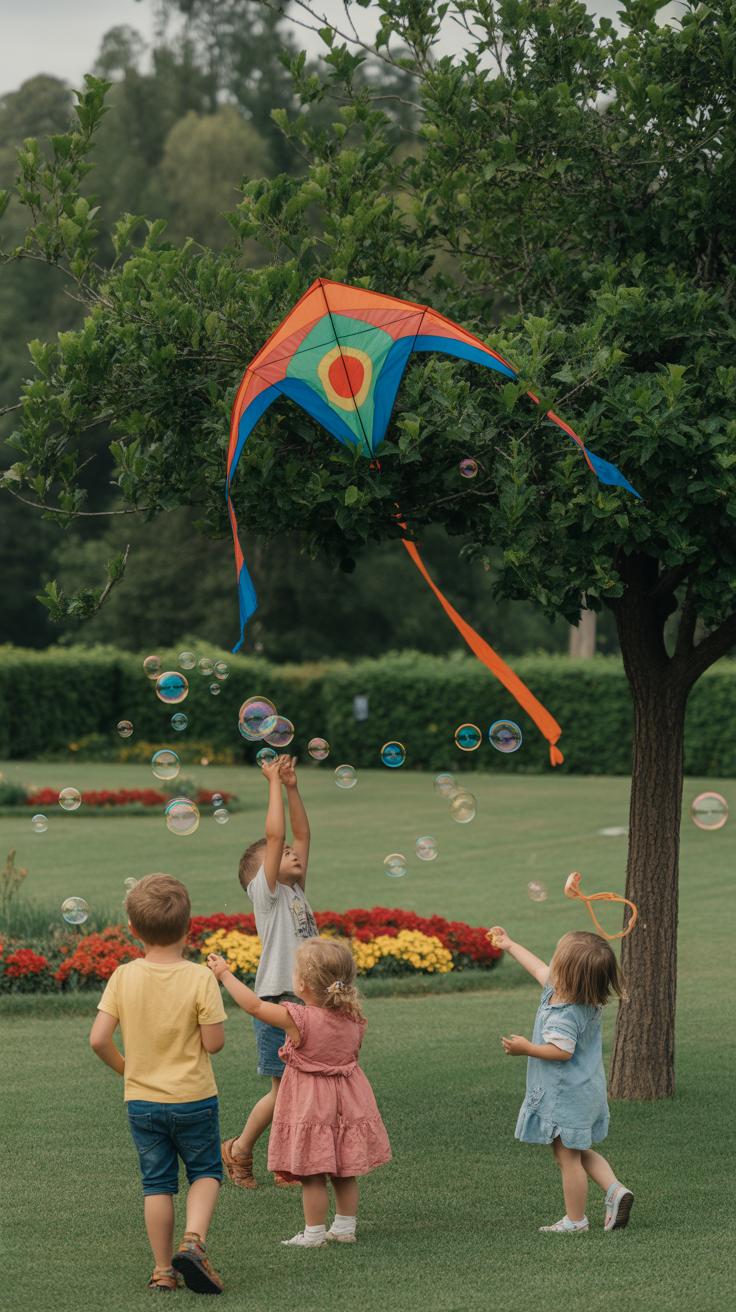
There’s more to backyard fun than scavenger hunts and tech-enhanced games. Sometimes, the simplest activities surprise you with how much kids enjoy them. Crafts, for example, encourage creativity while keeping hands busy and minds curious. Try making leaf rubbings by placing paper over different leaves and coloring with crayons. Or gather sticks and small stones to create simple nature mobiles or picture frames. These projects don’t require fancy supplies, just a bit of patience and, well, a willingness to get a little messy.
On the more active side, physical games adapt easily to a backyard setting. Children often love relay races—you can use cones, balls, or even water balloons as part of the course. Backyard baseball doesn’t need a full field either; just a soft ball and a bat work. For younger kids, modify the rules so everyone feels included and the pace stays lively. You’ll notice that balancing movement with fun crafts gives kids a nice change of pace and something to look forward to on different days. Have you tried mixing these ideas in your backyard? It could be worth experimenting.
How to Keep Kids Engaged Throughout the Summer
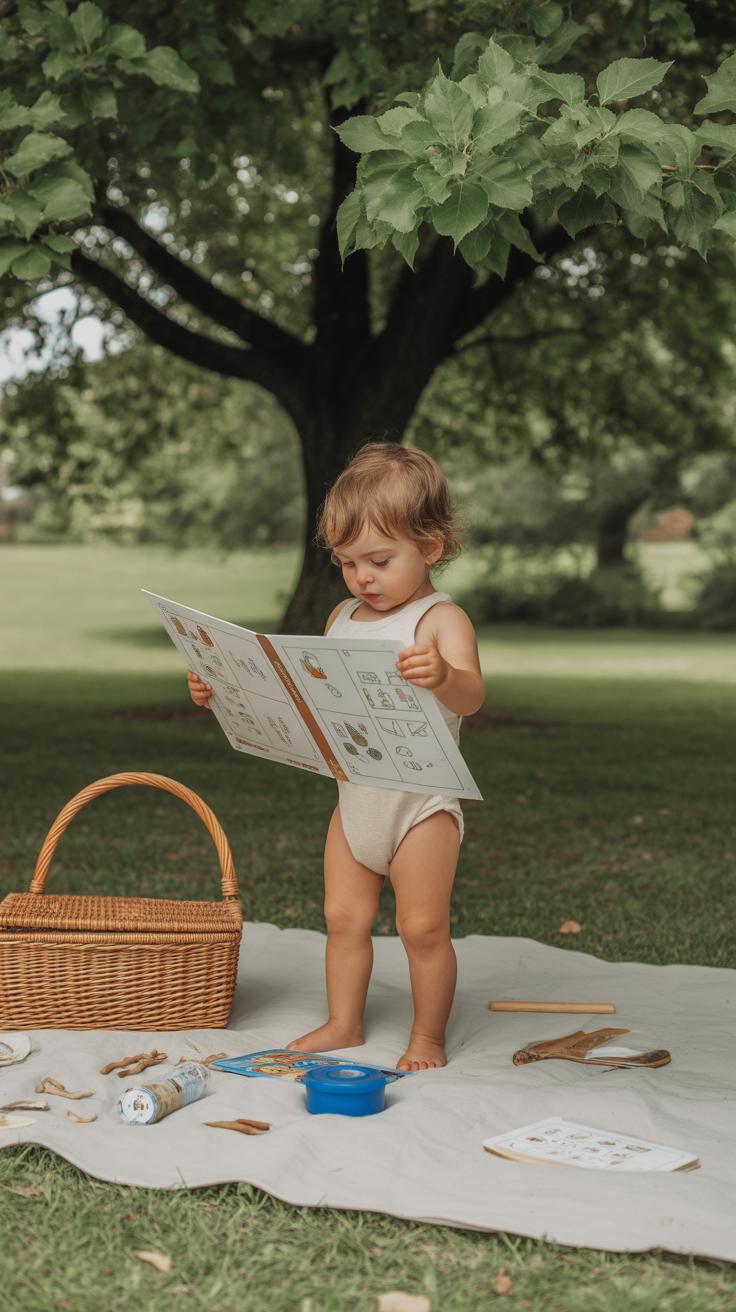
Keeping kids interested in outdoor play for weeks can be tricky. The key is to mix things up without overwhelming yourself with constant planning. Maybe plan a broad idea each week, then break it down day by day, so things feel fresh but manageable.
Try not to stick to just one kind of activity. One day could be a scavenger hunt; the next could be building nature crafts or playing simple sports. Switching from active games to creative projects helps keep children curious. When they don’t know what’s next, they’re more likely to stay engaged.
Kids often get even more excited when they help decide what to do. Invite them to suggest games or pick themes for the week. Sometimes their ideas might sound odd or impractical, but you can steer those into doable plans. This involvement makes them feel in control and gives you a sneak peek into what interests them most.
It’s kind of like a dance—you lead a bit, and then you follow. Let them take the reins occasionally, and you might be surprised how eager they become to play outside day after day.
Tips for Parents to Support Childrens Summer Play
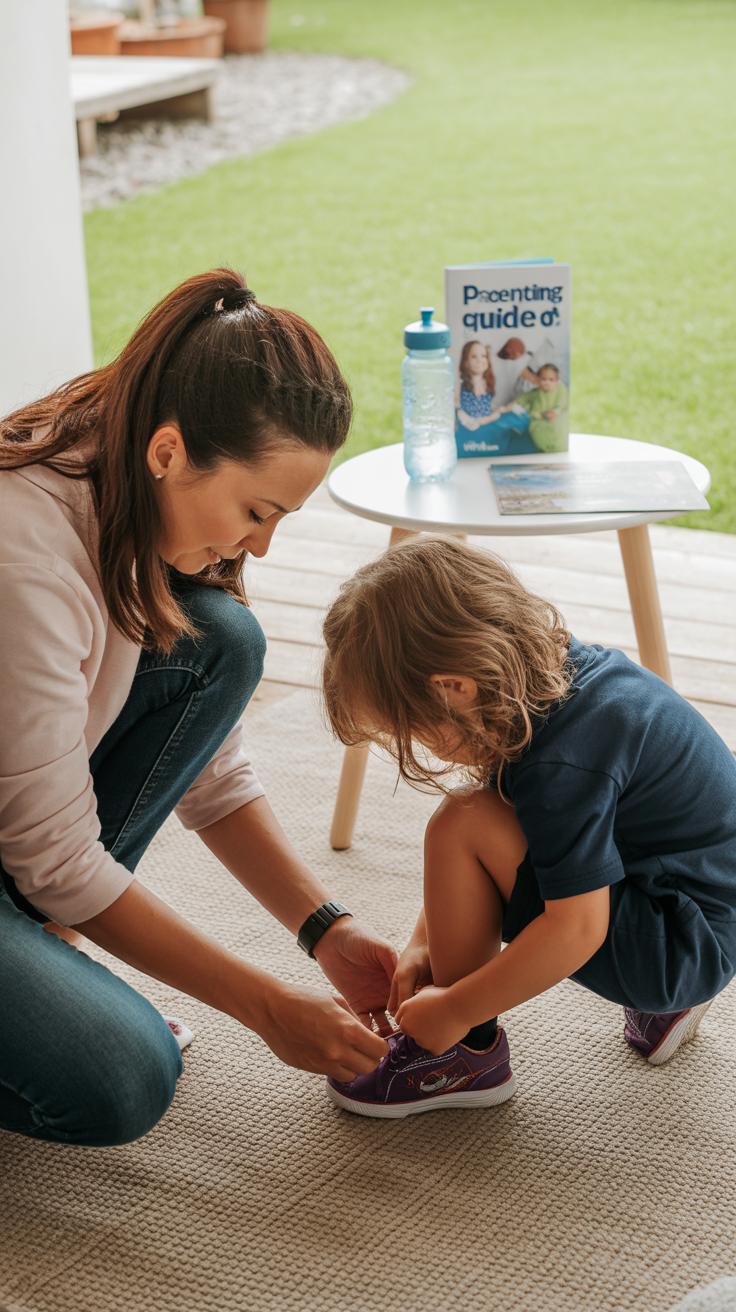
Finding the right balance between encouraging your child to play outside and not hovering can be tricky. You want to be there, yet not so much that you take away their sense of adventure. One way is to provide simple materials—like buckets, magnifying glasses, or chalk—then step back and let curiosity take over. It’s amazing how a few small things can spark hours of exploration.
When your child tries something new or figures out a game, offer quiet but genuine praise. It encourages them without making them feel watched. You might say, “I love how you built that,” or just smile and nod from a distance. Sometimes, words aren’t even necessary.
Preparing a Safe Play Environment
Make your outdoor space feel welcoming and safe but not like a cage. Clear sharp objects and anything toxic, yes, but also think about comfort. Shade spots, water access, and soft ground can invite longer play sessions. You might set up a low table or cushions to create a little base camp.
Imagine your yard as a flexible stage—room to run, hide, and build. Children can get hurt, sure, but manageable risks help them learn. So don’t blankly remove every potential hazard, just keep the biggest ones out of reach. A bike helmet lying around or a neat corner for storing tools says you expect play—and you expect them to be safe doing it.
Encouraging Independence and Confidence
Let kids lead their play choices whenever possible. When they decide whether to explore the bushes or dig in the dirt, they’re building confidence—and maybe a little problem-solving skill too. If they ask for help, give it, but if not, watch quietly from the sidelines.
This approach isn’t always easy though. Sometimes, you might feel like jumping in to direct or fix things, but stepping back helps them trust themselves more. Have you noticed how puzzles or scavenger hunts get easier after some tries? It’s proof that freedom to experiment helps children manage challenges.
Measuring the Benefits of Summer Activities
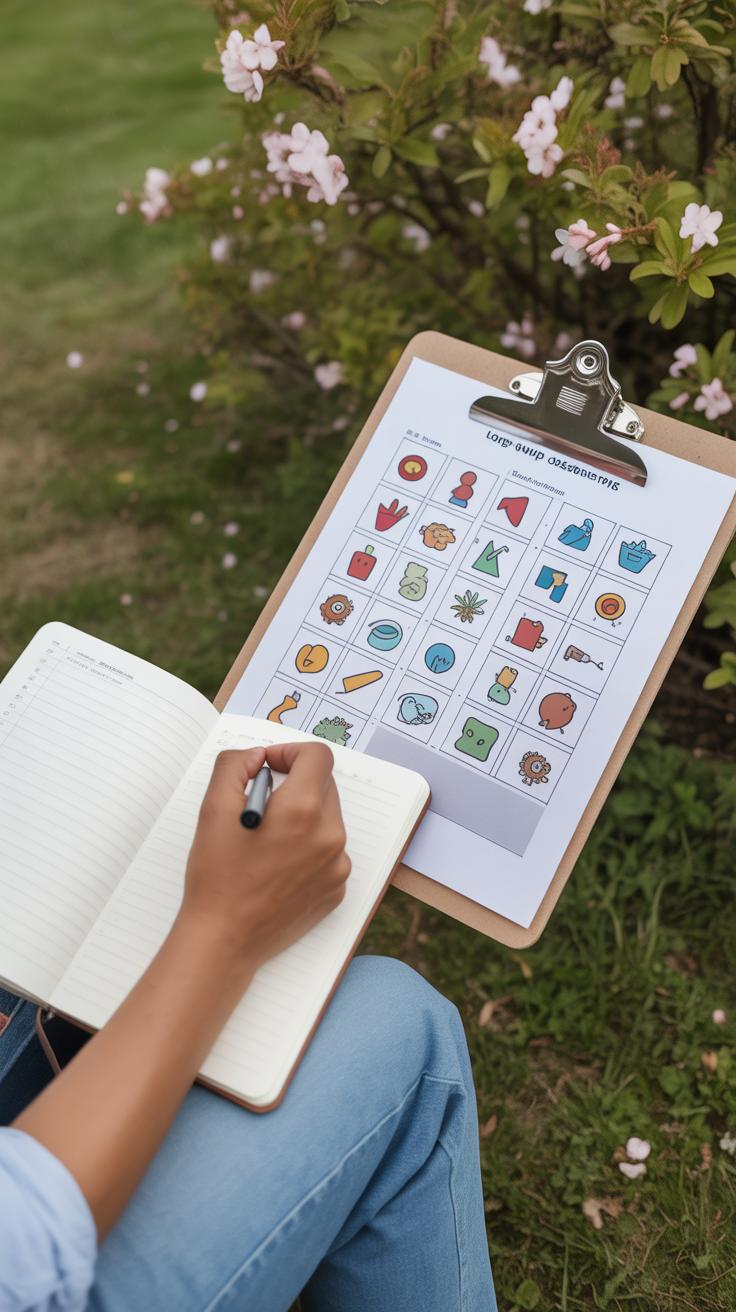
Watching kids play outside often feels like watching pure joy, but how do you really see the deeper changes? You might notice your child coming indoors with more energy than before—less tired, maybe even eager for more action. Their stamina slowly improves, and simple tasks like running or climbing no longer leave them breathless. Sometimes, you catch them sitting less and moving more, which says a lot about physical health, even if it seems subtle.
Pay attention to small signs too, like clearer skin or better sleep patterns after days spent outdoors. These things don’t jump out immediately, but over time, they add up. A child who spends time outside often has stronger muscles and better coordination, even if you don’t measure it with tests.
Noticing Physical Improvements
Parents can see effects in ways that are almost effortless: a longer attention span, less irritability, or fewer complaints about boredom. You may find your kid asking for sneakers instead of screen time. Try comparing photos or recalling last summer’s energy levels to now—any noticeable extra spring in their step means something.
Observing Emotional and Social Growth
Social skills often blossom in unexpected moments. Maybe your child starts initiating games or negotiating rules more smoothly. Perhaps they’re less shy or more willing to share. These subtle shifts hint at confidence building through play, even if it’s not always visible immediately.
Feelings of happiness seem more anchored in kids who spend hours outdoors. You might catch them smiling more or being less prone to tantrums. Watching them cooperate with friends, resolve small disputes, or show empathy offers a real window into emotional growth.
Of course, every child is different, and sometimes progress is uneven, but those small, positive changes mean summer activities are working. Ever wonder how long it takes for these shifts to become obvious? It could be faster than you think—just keep paying attention and appreciating the little wins.
Conclusions
Creative summer activities like backyard scavenger hunts offer many advantages for kids. They combine play, education, and physical activity in a natural environment. By organizing these games, you support your child’s development in a simple and enjoyable way. Plus, spending time outside creates lasting memories with family and friends.
As the summer unfolds, take the opportunity to try different backyard games and activities. Notice how your kids grow more confident, observant, and joyful as they explore their surroundings. Remember, thoughtful planning and a spirit of adventure can turn any summer day into a wonderful experience for your children.


